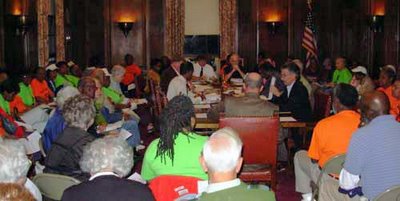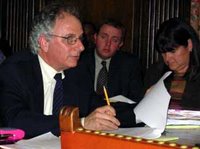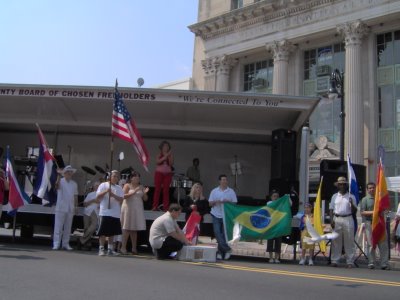Planners Memorialize Redevelopment Items
Barely a quorum showed up and the measures passed on votes of just four members. Asked why the board could not have memorialized the resolutions at next Thursday’s regular Planning Board meeting, Chairman Ken Robertson said he was requested to schedule the special meeting.
Obviously the fast-track pace of recent land use actions is meant to benefit somebody, but so far there has been no developer named for the East Third/Richmond tract. Dornoch Holdings has been showcased as the developer of the senior center site, with 63 condos above the center, but no site plan has been filed. Residents will have to stay tuned to see what the game plan really is.
The East Third/Richmond proposal originally called for up to 100 units per acre, but the board scaled it down to 84, with some consideration given for environmentally-friendly development. The proposal far exceeds the current density limits for townhouse or condo development, which is 10-12 units per acre, according to the resolution. Although not supported by the current zoning ordinance, the density is deemed necessary for “sound planning reasons,” the resolution states.
The resolution also glossed over the fact that the “in need of redevelopment “ study and the resultant plan were both on the Planning Board’s table on Sept. 7, in advance of the governing body’s review and approval. After a hectic week with two closed-door sessions, the City Council held a special emergency meeting Saturday to approve the plan and the senior center resolution.
The senior center resolution referenced the East Third/Richmond proposal in a way that Plaintalker could not follow. The resolution referred to senior “housing opportunities” while saying ”It is highly beneficial to their welfare to have all senior citizen activities consolidated in one location.”
However, the condos above the senior center have been described as selling at market rate, which would exclude all but well-to-do senior buyers. Condo prices for proposed developments have been quoted in the $325,000-$350,000 range.
Dornoch has proposed spending $15 million to finance the entire project at no cost to the city.
The resolution for the senior center linked the East Third/Richmond project by saying an “adjacent” block was to be rezoned to permit a senior center. The proposed senior center site spans both East Front Street and East Second Street.
While the public may not be privy to redevelopment plans, a posting on the city’s web site talks about four unspecified redevelopment proposals that may get consideration for “payment in lieu of taxes.” Obviously redevelopment negotiations are sensitive, but when will the public learn what the insiders already know?
--Bernice Paglia


















